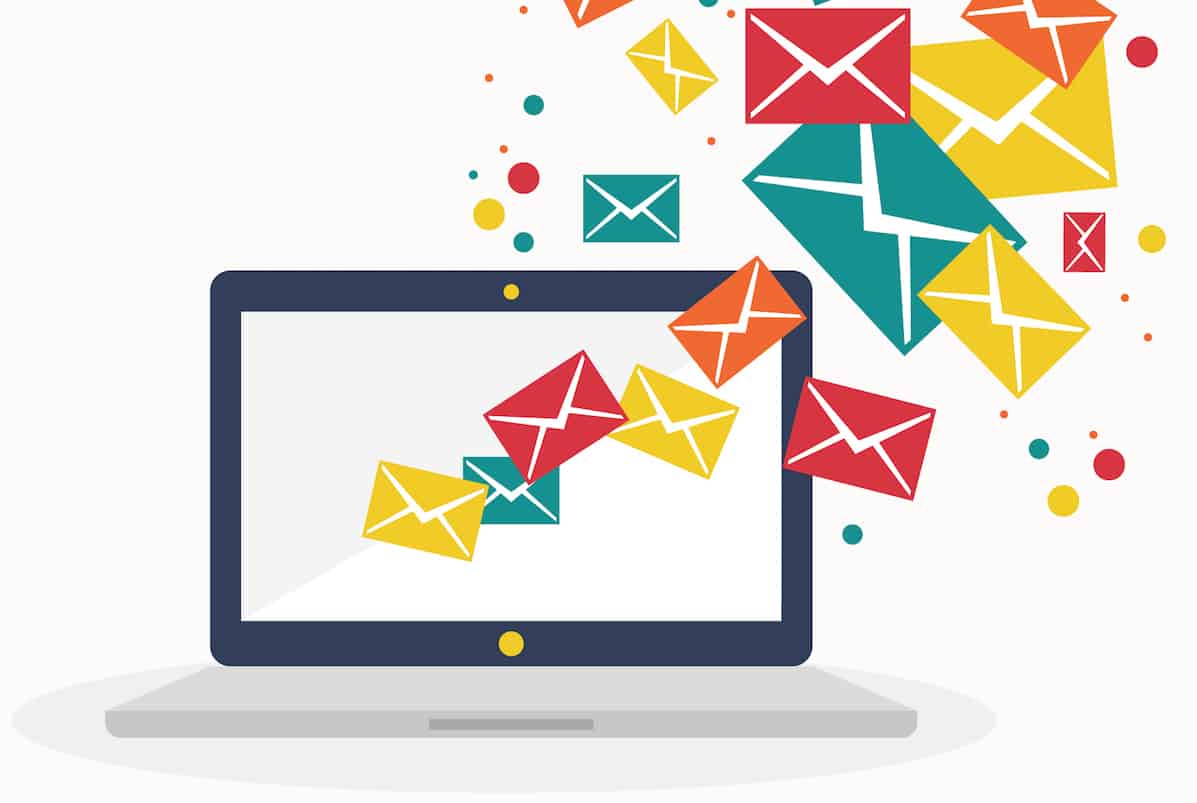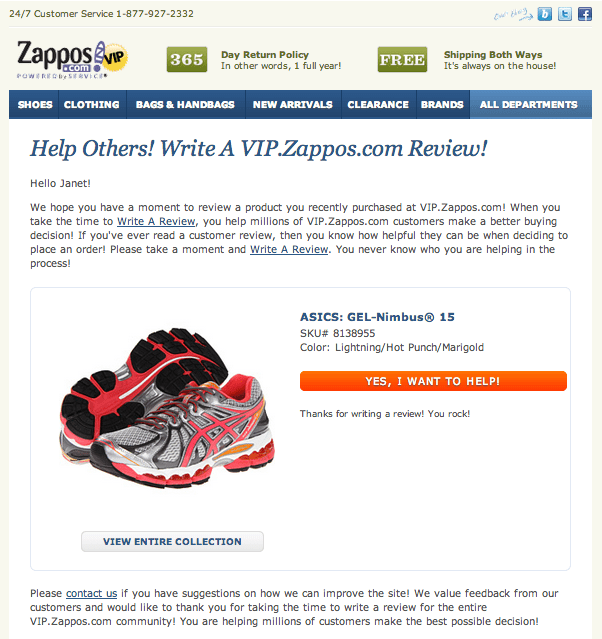
What is the most essential element to long-term sales?
Retention.
Repeat customers are the lifeblood of any eCommerce business. Existing customers are 9 times more likely to convert than new customers. And it’s 10 times more expensive to get a new customer than it is to sell something to an existing customer.
The key to retention is to keep the customer engaged with your business after they have purchased from you.
One of the best ways to do this is through a post purchase email campaign – a series of transactional emails that trigger when someone buys something from your store.
Here’s what to know if you plan to create a series to improve your customer retention rates.
Why Send a Post Purchase Email Series?
The most important purchase a customer will make is actually their second one. Share on XAnyone with curiosity might purchase from you the first time, but studies show that customers who place two orders are 50% more likely to place a third, fourth and so on.
In short, if they purchase from you again, they’re more likely to become a loyal repeat customer.
But the second purchase window of opportunity is limited. Only 32% of customers place a second order in their first year as a customer, and the likelihood of a repurchase drops significantly after the first year.
So your chance to capture their attention a second time needs to happen soon after the first purchase is made.
This is where automatic triggered emails, like a post-purchase email series, come in handy.
Post purchase emails have an average open rate of nearly 43%, a click-through rate of roughly 18% and a conversion rate of 10%. The average conversion rate is somewhere near 2-5%, for reference.
The reason they work so well is that the customer is expecting to receive them. They’re ready, and if they like the first product(s) they purchased from you, they’re more willing to open the next offer you have for them.
Types of Post Purchase Emails
The goal with a post purchase email series is to start with the most obvious emails that customers will expect. Your order confirmation email, for example – and then move on to some less obvious ones that grab their attention.
1. Order Confirmation Emails
Order confirmation emails are the most important triggered emails you will send. They let the customer know that everything worked. They should be the first thing that gets sent.
A confirmation email reply should let the customer know that the order went through, when they can expect it to ship, how they can view their order online and who to contact if there’s a problem.
Here is a typical order confirmation email example from Amazon:

Including a receipt or a link to a receipt with your confirmation email reply can also boost retention rates. Statistics show that email receipts are opened 70.9% of the time, which is more than 4 times the average of a traditional marketing email.
Amazon does this in their confirmation emails, but they also take it a step further by including upsells for similar products.
The upsell can be a nice way to bring a customer’s attention back to your website, especially if they’re looking for products that are typically re-ordered.
Order Confirmation Email Example
Here is a perfect order confirmation email example from Target that hits all of the right notes:

It has a confirmation number that shows the order was placed. It also includes answers to frequently asked questions, product recommendations, and a big red button letting the customer know how to track their order.
The email is also well branded and uncluttered. This is the perfect order confirmation sample if you’re not sure how to start designing your own. If you need more order confirmation email samples, you can find some inspiration here and here.
2. Shipping Confirmation Emails
Make the next email in your post-purchase email series a shipping confirmation email to update the customer on the status of their order.
Use this email to remind the customer how they can track their order. Make sure you include contact information in case their package is not received for whatever reason.

In addition to shipping information, this email provides a great opportunity for product advice. You can also inform customers key tidbits about their purchase before the product actually arrives.
Shipping Confirmation Email Sample
Jus by Julie shows all of these things in their shipping confirmation emails:

After the initial shipping confirmation email, send a shipping “check-in” email around the time the package is set to arrive.
Things you can put into this followup email:
- Ask the customer if the product arrived on time
- Did the package arrive OK or was it damaged?
- Do you need to follow up on anything because of those?
Email Confirmation Examples: Key Takeaways
When sending email confirmations, keep these in mind:
- Provide as much information about the order as possible
- Take advantage of order tracking
- Don’t be afraid to upsell similar products
- Include “to know” information about the product or links to helpful resources
- Send the order confirmation email as soon as possible post purchase
3. Review Request Emails
Customer reviews help attract and retain customers. You absolutely need more of these.
88% of customers say that they trust online reviews as much as personal recommendations. And 89% of customers will purchase within one week of reading positive reviews.
Reviews help your business, by providing valuable insight into ways you can better serve your customers.
A review request email asks the customer to leave a review of the product or to rate the experience they had with you.
Ideally, send this email after a few weeks, which gives the customer enough time to try and enjoy your product.
The review email asks customers to share their (positive) experience. Ask them to provide an image of the product being reviewed (from a link to a review page), and describe the benefits of the review for both the customer and the company.
Zappos shines at asking for reviews in their email series:

If a customer didn’t like the product, this is also a great opportunity to learn why. Offer them an additional discount or promotion to compensate for a negative experience.
Recapture fully supports sending post purchase emails including welcome series, upsells, and review reminders today.
Which leads to another email in the series you will want to send…
4. Discount or Discount-to-Reorder Emails
Your final post-purchase email should be a discount offer, either on a re-order of the originally purchased product or for another time-sensitive order (free shipping, a certain percentage off storewide for the next two days, etc.).

Repeat customers spend 67% more than new customers on average. Even if you’re wary of providing a discount after a first purchase, you can use this as an opportunity to promote the second sale that will lead to a third.
Think about it: You already spent the money to acquire a new customer. You could spend the same time and effort to acquire another new customer or much less time and money to keep the same one.
Use the last email in your series as an incentive to create another repeat purchase.
Creating a Great Post Purchase Email Series
If you want to get the most out of your post-purchase email, consider doing the following.
Send triggered emails in a tight schedule. Order confirmation emails should be triggered as soon as the purchase is complete, and the shipping email confirmations as soon as the product has shipped. You should also have a tight deadline for additional emails in your series. Send your review request no later than a week after purchase, and send your final email around the same time.
Make your emails memorable. Don’t forget about branding. Your emails don’t have to be complicated, but customers should know exactly whom the emails are from and why they’re receiving them. Include links back to your site and images of the product (with a link to the product page) in your emails as well.
Be polite, use the customer’s name and don’t be pushy. Saying “thank you” works just as well in an email as it does in real life. The same rules for good manners also apply to your emails. Use the customer’s name, be polite and don’t use language that sounds too forceful. You are grateful for their purchase, and you want them to feel that in your email copy.
Final Thoughts
Triggered post-purchase emails are an important part of your retention strategy. Spending the time to set up a great series of emails is worth the effort.
If nothing else, you want to send an order confirmation email reply as well as a basic shipping notification. You can take that to the next level by sending email review requests and additional discounts, too.
But even if you stick to the basics, you can include additional enticements, like upsells and links back to your site for customers to use directly from their inbox.
This will not only build trust, but also turn first-time shoppers into loyal ones.
Need to boost post purchase emails on your store? How about using Recapture to do that?
Ready to get started?
You can have Recapture up and running in 5 minutes.
Free, 14-day, zero-risk, no-credit-card-required trial.
Simplify your email marketing, profitably, right now!




